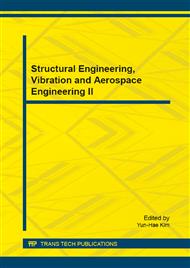p.121
p.126
p.131
p.139
p.144
p.148
p.152
p.156
p.161
The Influencing Factors’ Identification and Analysis of Rockfill Dam Slope’s Stability in Tailing Pond Based on RS and PCA
Abstract:
In order to intensively study the stability influencing factors of rockfill dam slope in tailing pond, it was simplified to the common rock slope. And the data of 45 groups of circular failure slope was collected, based on the discrete normalization, the condition attributes of influencing stability were reduced by Rough Set theory (RS), at the same time, the stability influencing factors were simplified by Principal Component Analysis (PCA). Combining the two results through the above two methods, the main affecting factors of the rockfill dam slope’s stability are: rock density, slope angle and the angle of internal friction. The study conclusion can provide the decision-making basis for the rockfill dam design and safety management, and also be used as the foundation for other intelligent algorithm to predict the dam safety coefficient.
Info:
Periodical:
Pages:
144-147
Citation:
Online since:
January 2015
Authors:
Price:
Сopyright:
© 2015 Trans Tech Publications Ltd. All Rights Reserved
Share:
Citation:


